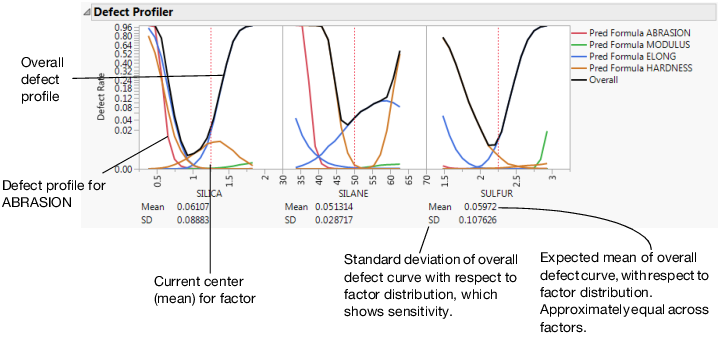Introduction to Tolerance Design
Tolerance design is the investigation of how defect rates can be controlled by controlling variability in the input factors.
Input factors have variation. Specification limits are used to define acceptable ranges for each input. The variability in the input factors impacts the outputs. Specification limits are also used to define the acceptable range for output variables.
Sometimes, a tolerance design study shows that spec limits on an input are unnecessarily tight. Loosening such limits can result in reduced costs without sacrificing product quality. In these cases, tolerance design can save money.
In other cases, a tolerance design study might find that either tighter limits or different targets result in higher quality. In all cases, it is valuable to understand how the inputs and their variability impact that the defect rates.
The Defect Profiler shows the defect rate as a function of each factor fixed at the specified mean value while all other factors are varied according to their random specification. If there are multiple outputs with spec limits, each has a different colored defect rate curve. A black curve shows the overall defect rate.
Figure 8.7 Defect Profiler
